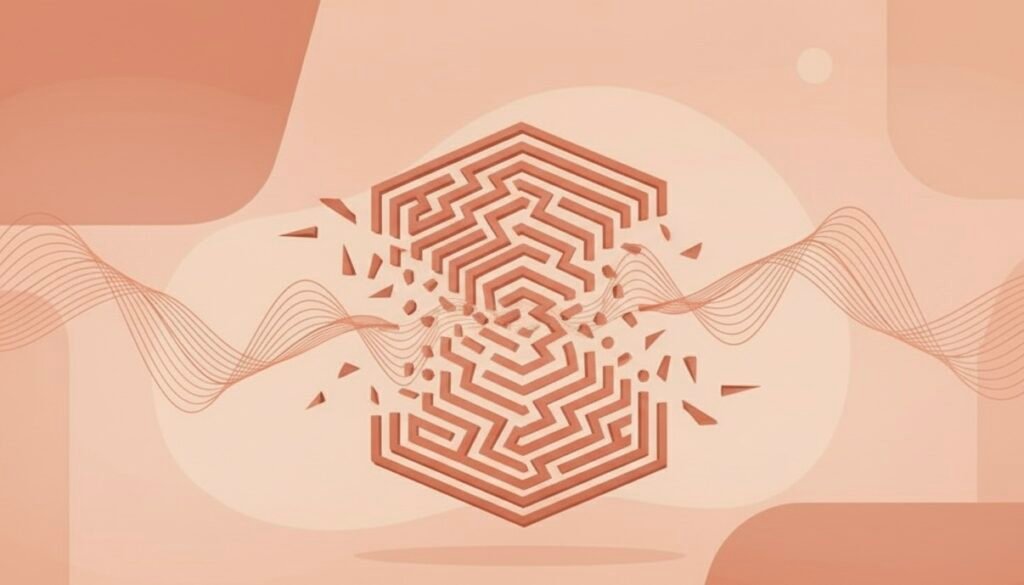Why Diagnosis Is Tricky
If you live with long-lasting pain, you’ve probably asked yourself: How do I prove my pain is real? How is chronic pain usually diagnosed? These are some of the most common questions people bring to doctors’ offices, and unfortunately, they don’t always get straightforward answers.
Unlike other conditions, chronic pain doesn’t show up in one blood test or scan. Diagnosing it means connecting patterns: how long the pain has lasted, how it affects your life, and what other causes have been ruled out.
This article – part one of a two-part series – explains step by step how chronic pain is diagnosed, why the process often fails patients, and what you can do to move toward clearer answers.
If you want to read what this feels like in real life, I’ve shared my journey here.
Part Two continues this topic in practice. My physiotherapist, Eduardo Fondevila, walks through what a proper clinical assessment for persistent pain should look like, from the first questions to the shift toward functionality and hope.
Read Part Two: Inside the Clinical Interview – How a Physiotherapist Assesses Chronic Pain
When Pain Becomes Chronic
Doctors worldwide use a simple benchmark: pain that lasts more than three months is considered chronic. This is how they separate acute pain (temporary, linked to injury or illness) from chronic pain (longer-lasting, involving the nervous system).
The ICD-11 (the World Health Organization’s International Classification of Diseases, 11th edition) categorizes chronic pain into:
- Chronic primary pain → pain is the condition itself (for example, fibromyalgia, widespread low back pain).
- Chronic secondary pain → pain caused by another illness (for example, arthritis, cancer, injury).
For more on the difference between acute and chronic pain, see Understanding Chronic Pain.

What Doctors Look For: The Criteria
So, what qualifies as chronic pain? Most clinicians use three core steps:
- Duration – pain persisting for at least 3 months.
- Impact – the extent it disrupts sleep, work, movement, or daily activities.
- Exclusion – ruling out other causes that need specific treatment.
This combination forms the basis for diagnosing chronic pain. It’s not about one test, but about recognizing a pattern that fits established criteria.
A crucial point: diagnosis relies heavily on your story and history. Imaging and lab results are very useful, but they rarely tell the complete picture.
How Tests Fit Into Diagnosis
People often ask, “How do you prove chronic pain?” The short answer: you can’t prove it with one test. Instead, doctors use multiple assessments to build confidence in a diagnosis:
- Imaging (MRI, CT, X-ray): checks for structural problems but cannot “prove” pain. Many people with severe pain have normal scans and many with abnormal scans feel no pain.
- Blood tests are helpful when doctors suspect inflammation, autoimmune disease or infection.
- Neurological/functional exams: test reflexes, nerve conduction, strength. Helpful for neuropathic pain.
- Patient history and physical exam: the most important “test” for chronic pain.
Intermittent counts too: chronic pain can fluctuate, flare or quiet down.

Why Chronic Pain Is Often Missed
1. Pain without visible damage
When scans look normal, pain is sometimes dismissed as “not real.” But pain pathways in the nervous system can amplify signals even without tissue injury.
2. Limited training in pain medicine
Worldwide reviews show pain education in medical schools is limited. Future doctors receive far less training in pain science than in other specialties. This leaves many professionals under-prepared to assess or explain long-term pain.
3. Systemic gaps
- Short appointment times: in the UK, standard GP consultations are often 10 minutes, and only recently has the Royal College of General Practitioners recommended extending them to 15 minutes – still shorter than many European countries. That makes it very hard to fully assess complex pain cases.
- Fragmented care: pain often sits between specialties (orthopedics, neurology, rheumatology), so patients are passed from one to another without coordination.
4. Bias (What The Evidence Shows Worldwide)
Studies show that some groups of people are more likely to have their pain questioned or underestimated. This doesn’t happen in every setting, but it’s a pattern seen in many healthcare systems.
- Gender differences – observed in both Western and non-Western studies. Women’s pain is often described using emotional language (“sensitive,” “anxious”) rather than clinical terms.
- Age bias is common everywhere – younger patients are often told their pain is “stress” or “growing pains,” while older adults may be told it’s “just aging.”
- Cultural and ethnic differences – in some studies, patients from minority or underrepresented backgrounds reported longer waits for diagnosis or less access to pain medication.
These differences don’t justify every missed diagnosis, but they help underscore the frequent unconscious role of bias in perceiving and treating pain.
Recognizes this isn’t about blame; it’s about awareness. When doctors, researchers and patients understand these patterns, it helps everyone move toward fairer, more consistent care.
Emotional Factors: Clarifying a Misunderstanding
Sometimes doctors suggest chronic pain is because of stress, depression or anxiety. This can feel dismissive, but the science gives us a clearer picture: these factors can amplify pain signals, yet they do not mean the pain is “all in your head.”
What research shows:
- Pain is both sensory and emotional. According to the International Association for the Study of Pain (IASP, the main global authority on pain science), pain is “an unpleasant sensory and emotional experience.” Emotions influence intensity, but the experience remains real and bodily.
- Stress and anxiety increase sensitivity. Chronic stress alters the body’s stress-response system, called the HPA axis (hypothalamic-pituitary-adrenal axis), and changes how the brain’s pain-control circuits work. This creates hyperalgesia (heightened pain response).
- Depression and anxiety interact with pain. Studies show pain can worsen mood, and a low mood can worsen pain sensitivity. They influence each other but do not “cause” pain out of nothing.
- Trauma and early adversity increase risk. People with a history of trauma or ongoing stress are more likely to develop chronic pain because the nervous system learns to stay on high alert.
What this means in practice:
- A proper diagnosis should consider mood, sleep and stress as part of the entire picture, not as the sole explanation.
- Addressing these factors (with therapies like Cognitive-Behavioral Therapy or Acceptance and Commitment Therapy) can help reduce pain sensitivity and improve coping, but it doesn’t invalidate the reality of physical pain.
The right approach is to see emotional health as one piece of the puzzle and not the entire puzzle. Pain that lasts is always real, whether these factors are present.

Moving Toward the Right Diagnosis
Here’s what helps patients move forward:
- Document patterns: note flare-ups, triggers and functional limits.
- Be specific: instead of “I hurt everywhere,” try “I can’t sit longer than 20 minutes,” or “I wake up three times a night from pain.”
- Ask directly: “Does my case fit ICD-11 criteria for chronic pain?” This pushes the discussion into recognized medical standards.
- Seek the right specialists: pain clinics (ideally interdisciplinary), rheumatologists, neurologists.
Remember: how chronic pain is diagnosed is about connecting dots over time, not relying on a single scan.
A Careful Warning List
Guidelines from pain specialists worldwide emphasize caution:
- Avoid invasive procedures (like spinal injections or ablation) if scans are normal or findings don’t match your symptoms. For example, NICE (the UK’s National Institute for Health and Care Excellence, which sets medical guidelines) specifically advises against routine spinal injections for nonspecific low back pain.
- Opioids and strong medications: both NICE (the UK’s National Institute for Health and Care Excellence) and the CDC (the U.S. Centers for Disease Control and Prevention) recommend not starting opioids (such as tramadol, morphine or oxycodone), benzodiazepines (like diazepam or lorazepam), or gabapentinoids (such as pregabalin or gabapentin) for chronic primary pain, except in rare, carefully monitored cases.
- First-line treatments: gentle movement, physiotherapy, psychological support and nervous system regulation strategies.
What this means for you: if a doctor recommends heavy medication or invasive procedures when your tests show no clear structural issue, ask how this fits with current pain guidelines.
Ask for clarity: Why this treatment? What are the risks? What are the alternatives? And what’s the plan for the long run?

What Gives Us Hope: The Future of Chronic Pain Diagnosis
For decades, people with chronic pain have been told, “Your tests look normal.” That is changing. Researchers and clinicians are working on better ways to recognize, measure and treat chronic pain so patients can get answers faster and safer.
Here are some of the most promising directions:
- Better assessment tools: beyond the 1–10 pain scale, doctors are increasingly using questionnaires and diaries that capture how pain affects sleep, mood, function and daily life. This makes your story more visible in diagnosis.
- Digital health & apps: new apps and wearable sensors are being tested to track pain patterns, stress and sleep. These tools may soon help doctors see what’s happening day to day, instead of relying only on short clinic visits.
- Biomarkers & brain imaging: scientists are searching for biological “fingerprints” of chronic pain – from blood markers to brain activity – that could one day provide objective support for diagnosis. These are not routine yet, but progress is steady.
- Personalized approaches: instead of treating everyone the same, research is moving toward classifying patients into different “pain profiles.” This could mean more targeted therapies depending on whether your pain is driven by nerves, inflammation or nervous system sensitivity.
- Medication safety awareness: there is now wider recognition of the risks of heavy drugs. For example, long-term opioid use can sometimes backfire by making the nervous system more sensitive – a process called opioid-induced hyperalgesia. New guidelines from NICE and the CDC are pushing for safer, multi-disciplinary treatment plans.
- Interdisciplinary care: more clinics are adopting the “team model,” where doctors, physiotherapists and psychologists work together. This is the gold standard, and it improves the outcomes compared to isolated specialist visits.
These changes won’t solve everything overnight, but they show that the medical world is evolving. Patients are being heard, science is catching up, and future diagnoses will probably be more accurate and compassionate than what many of us experienced in the past.
A Different Kind of Diagnosis
Chronic pain is diagnosed by time, impact and exclusion – not by one definitive test. Labels like those in ICD-11 help provide recognition, open treatment options and offer validation.
If your scans are clear but your pain continues, it doesn’t mean it’s all in your head. It means your pain needs to be understood differently.
And as new research and better care models develop, there’s reason to hope that the process of diagnosis will keep getting clearer, safer and more patient-centered.
FAQs
By combining three criteria: more than 3 months, impact on life and exclusion of other causes. Doctors then use ICD-11 labels (primary or secondary).
If it lasts beyond 3 months and interferes with daily life, it fits the definition.
There’s no single proof. A proper diagnosis comes from your story, the way pain affects your daily activities, a physical exam and the process of ruling out other conditions.
Yes, fluctuations and flare-ups are common; the overall duration is what matters.
Because tests can look normal, appointments are short, training is limited and biases sometimes influence assessment.
Into primary (pain as the disease) and secondary (pain because of another condition).
If your pain lasts more than 3 months and keeps you from daily activities, it’s time to ask for specialist support.
No, pain is common with age but not automatically “normal.” Persistent pain should be assessed and diagnosed.
Not necessarily. Many people benefit more from movement, physiotherapy, nervous system regulation and psychological therapies.
No. Complete rest often makes pain worse. Gentle, paced movement is part of most treatment plans.

Selected Resources
Below are a few key supports for “What Gives Us Hope” section; for deeper reading.
- Chronic pain (primary and secondary) in over 16s: assessment of all chronic pain and management of chronic primary pain (NICE guideline NG193, 2021) – UK National Institute for Health and Care Excellence (nice.org.uk)
- CDC Clinical Practice Guideline for Prescribing Opioids for Pain (2022) – U.S. Centers for Disease Control and Prevention (cdc.gov)
- Opioid-Induced Hyperalgesia: Clinically Relevant or Extraneous – Review article on how long-term opioid use can paradoxically increase pain sensitivity (pmc.ncbi.nlm.nih.gov)
- NICE guideline NG193 for chronic pain: reasons to be cheerful – Commentary on how the new guideline is shifting perspectives in pain management (pmc.ncbi.nlm.nih.gov)
- Pain Management Best Practices Inter-Agency Task Force Report (2019) – U.S. Department of Health and Human Services (hhs.gov)
If you got this far,
Get Support in Your Inbox
Subscribe to the newsletter and let me help you turn confusion into clarity. The PDF I have prepared is a guide that will help you organise all the elements of your condition: symptoms, treatments and impact, so you can understand your pain behaviour. This is truly important for explaining it to healthcare professionals, loved ones and yourself.
“Clinical Clarity Workbook – A map for precise diagnosis“
Until next time,
Alina

